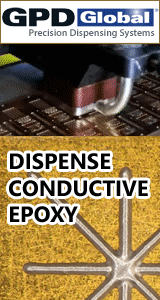Printed Circuit Board Assembly & PCB Design Forum
SMT electronics assembly manufacturing forum.
- SMTnet
- »
- Electronics Forum
- »
- Fillet Tearing
Fillet Tearing
Views: 4705
![]() Dear all,
Referring technical report from Vitronics Solte...
- Mar 22, 2006
by
Dear all,
Referring technical report from Vitronics Solte...
- Mar 22, 2006
by
![]()
![]() Bomb europe!
...
- Mar 22, 2006
by
Bomb europe!
...
- Mar 22, 2006
by
![]()
![]() Leave us alone, olive oil isn't the same as crude!
Defect...
- Mar 22, 2006
by
Rob
Leave us alone, olive oil isn't the same as crude!
Defect...
- Mar 22, 2006
by
Rob
![]()
![]()
![]() Good one Rob!
But you know we americans now need more o...
- Mar 22, 2006
by
RDR
Good one Rob!
But you know we americans now need more o...
- Mar 22, 2006
by
RDR
![]()
![]()
![]() Rob,
Very interesting
The defect of the month that isn't a...
- Mar 22, 2006
by
Patrick Bruneel
Rob,
Very interesting
The defect of the month that isn't a...
- Mar 22, 2006
by
Patrick Bruneel
![]()
![]()
![]() I like the "if you can see the bottom" part! would that inc...
- Mar 22, 2006
by
RDR
I like the "if you can see the bottom" part! would that inc...
- Mar 22, 2006
by
RDR
![]()
![]()
![]() Find out the lead frame alloy. Cte mismatch can cause the s...
- Mar 22, 2006
by
Find out the lead frame alloy. Cte mismatch can cause the s...
- Mar 22, 2006
by
![]()
![]() Is anyone else picturing a Homer Simpson lookalike in a lycr...
- Mar 23, 2006
by
Rob
Is anyone else picturing a Homer Simpson lookalike in a lycr...
- Mar 23, 2006
by
Rob
![]()
![]()
![]() According to the original article, no. It is formed by the ...
- Mar 23, 2006
by
According to the original article, no. It is formed by the ...
- Mar 23, 2006
by
![]()
![]() WEll Im hearing all this talk about leadfree nonsense from t...
- Mar 23, 2006
by
WEll Im hearing all this talk about leadfree nonsense from t...
- Mar 23, 2006
by
![]()
![]() Wave Master and MoonMan, sitting in a tree
S-O-L-D-E-R-I-N-...
- Mar 23, 2006
by
Wave Master and MoonMan, sitting in a tree
S-O-L-D-E-R-I-N-...
- Mar 23, 2006
by
![]()
![]() LOL!!!
I have over 20 years of this stuff. Should I be w...
- Mar 23, 2006
by
LOL!!!
I have over 20 years of this stuff. Should I be w...
- Mar 23, 2006
by
![]()
![]() Sorry, Super Chunks is already taken.
...
- Mar 23, 2006
by
Rob
Sorry, Super Chunks is already taken.
...
- Mar 23, 2006
by
Rob
![]()
![]()
![]() I think you're right Larry! I am going to put together a li...
- Mar 23, 2006
by
RDR
I think you're right Larry! I am going to put together a li...
- Mar 23, 2006
by
RDR
![]()
![]()
![]() So is Special Chunks! And really feel "special" when I have...
- Mar 23, 2006
by
So is Special Chunks! And really feel "special" when I have...
- Mar 23, 2006
by
![]()
![]() Well, at least it gives you an option if you ever have a hea...
- Mar 23, 2006
by
Rob
Well, at least it gives you an option if you ever have a hea...
- Mar 23, 2006
by
Rob
![]()
![]()
![]() Russ,
On a serious note it's impossible to optical see th...
- Mar 23, 2006
by
Patrick Bruneel
Russ,
On a serious note it's impossible to optical see th...
- Mar 23, 2006
by
Patrick Bruneel
![]()
![]()
![]() I thought I already DID fall on my head and that's why I'm h...
- Mar 23, 2006
by
I thought I already DID fall on my head and that's why I'm h...
- Mar 23, 2006
by
![]()
![]() Dear all,
Referring comment from Mr. Jack,IPC director ce...
- Mar 23, 2006
by
Dear all,
Referring comment from Mr. Jack,IPC director ce...
- Mar 23, 2006
by
Joseph
- SMTnet
- »
- Electronics Forum
- »
- Fillet Tearing







